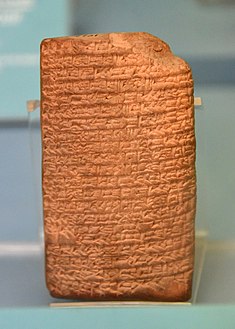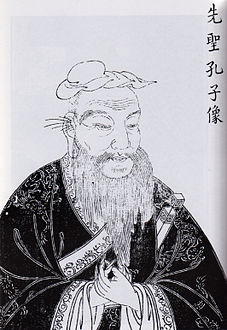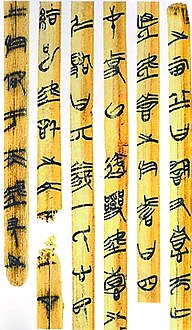
A | B | C | D | E | F | G | H | CH | I | J | K | L | M | N | O | P | Q | R | S | T | U | V | W | X | Y | Z | 0 | 1 | 2 | 3 | 4 | 5 | 6 | 7 | 8 | 9
| Literature | ||||||
|---|---|---|---|---|---|---|
 | ||||||
| Oral literature | ||||||
| Major written forms | ||||||
|
||||||
| Prose genres | ||||||
|
||||||
| Poetry genres | ||||||
|
||||||
| Dramatic genres | ||||||
| History | ||||||
| Lists and outlines | ||||||
| Theory and criticism | ||||||
|
| ||||||
Poetry (from the Greek word poiesis, "making") is a form of literary art that uses aesthetic and often rhythmic[1][2][3] qualities of language to evoke meanings in addition to, or in place of, literal or surface-level meanings. Any particular instance of poetry is called a poem and is written by a poet. Poets use a variety of techniques called poetic devices, such as assonance, alliteration, euphony and cacophony, onomatopoeia, rhythm (via metre), and sound symbolism, to produce musical or incantatory effects. Most poems are formatted in verse: a series or stack of lines on a page, which follow a rhythmic or other deliberate pattern. For this reason, verse has also become a synonym (a metonym) for poetry.[note 1]
Poetry has a long and varied history, evolving differentially across the globe. It dates back at least to prehistoric times with hunting poetry in Africa and to panegyric and elegiac court poetry of the empires of the Nile, Niger, and Volta River valleys.[4] Some of the earliest written poetry in Africa occurs among the Pyramid Texts written during the 25th century BCE. The earliest surviving Western Asian epic poem, the Epic of Gilgamesh, was written in the Sumerian language.
Early poems in the Eurasian continent evolved from folk songs such as the Chinese Shijing as well as from religious hymns (the Sanskrit Rigveda, the Zoroastrian Gathas, the Hurrian songs, and the Hebrew Psalms); or from a need to retell oral epics, as with the Egyptian Story of Sinuhe, Indian epic poetry, and the Homeric epics, the Iliad and the Odyssey.
Ancient Greek attempts to define poetry, such as Aristotle's Poetics, focused on the uses of speech in rhetoric, drama, song, and comedy. Later attempts concentrated on features such as repetition, verse form, and rhyme, and emphasized aesthetics which distinguish poetry from the format of more objectively-informative, academic, or typical writing, which is known as prose.
Poetry uses forms and conventions to suggest differential interpretations of words, or to evoke emotive responses. The use of ambiguity, symbolism, irony, and other stylistic elements of poetic diction often leaves a poem open to multiple interpretations. Similarly, figures of speech such as metaphor, simile, and metonymy[5] establish a resonance between otherwise disparate images—a layering of meanings, forming connections previously not perceived. Kindred forms of resonance may exist, between individual verses, in their patterns of rhyme or rhythm.
Some poetry types are unique to particular cultures and genres and respond to characteristics of the language in which the poet writes. Readers accustomed to identifying poetry with Dante, Goethe, Mickiewicz, or Rumi may think of it as written in lines based on rhyme and regular meter. There are, however, traditions, such as Biblical poetry and alliterative verse, that use other means to create rhythm and euphony. Much modern poetry reflects a critique of poetic tradition,[6] testing the principle of euphony itself or altogether forgoing rhyme or set rhythm.[7][8]
Poets – as, from the Greek, "makers" of language – have contributed to the evolution of the linguistic, expressive, and utilitarian qualities of their languages. In an increasingly globalized world, poets often adapt forms, styles, and techniques from diverse cultures and languages.
A Western cultural tradition (extending at least from Homer to Rilke) associates the production of poetry with inspiration – often by a Muse (either classical or contemporary), or through other (often canonised) poets' work which sets some kind of example or challenge.
In first-person poems, the lyrics are spoken by an "I", a character who may be termed the speaker, distinct from the poet (the author). Thus if, for example, a poem asserts, "I killed my enemy in Reno", it is the speaker, not the poet, who is the killer (unless this "confession" is a form of metaphor which needs to be considered in closer context – via close reading).
History
Early works
Some scholars believe that the art of poetry may predate literacy, and developed from folk epics and other oral genres.[9][10] Others, however, suggest that poetry did not necessarily predate writing.[11]
The oldest surviving epic poem, the Epic of Gilgamesh, dates from the 3rd millennium BCE in Sumer (in Mesopotamia, present-day Iraq), and was written in cuneiform script on clay tablets and, later, on papyrus.[12] The Istanbul tablet#2461, dating to c. 2000 BCE, describes an annual rite in which the king symbolically married and mated with the goddess Inanna to ensure fertility and prosperity; some have labelled it the world's oldest love poem.[13][14] An example of Egyptian epic poetry is The Story of Sinuhe (c. 1800 BCE).[15]
Other ancient epics includes the Greek Iliad and the Odyssey; the Persian Avestan books (the Yasna); the Roman national epic, Virgil's Aeneid (written between 29 and 19 BCE); and the Indian epics, the Ramayana and the Mahabharata. Epic poetry appears to have been composed in poetic form as an aid to memorization and oral transmission in ancient societies.[11][16]
Other forms of poetry, including such ancient collections of religious hymns as the Indian Sanskrit-language Rigveda, the Avestan Gathas, the Hurrian songs, and the Hebrew Psalms, possibly developed directly from folk songs. The earliest entries in the oldest extant collection of Chinese poetry, the Classic of Poetry (Shijing), were initially lyrics.[17] The Shijing, with its collection of poems and folk songs, was heavily valued by the philosopher Confucius and is considered to be one of the official Confucian classics. His remarks on the subject have become an invaluable source in ancient music theory.[18]
The efforts of ancient thinkers to determine what makes poetry distinctive as a form, and what distinguishes good poetry from bad, resulted in "poetics"—the study of the aesthetics of poetry.[19] Some ancient societies, such as China's through the Shijing, developed canons of poetic works that had ritual as well as aesthetic importance.[20] More recently, thinkers have struggled to find a definition that could encompass formal differences as great as those between Chaucer's Canterbury Tales and Matsuo Bashō's Oku no Hosomichi, as well as differences in content spanning Tanakh religious poetry, love poetry, and rap.[21]
Until recently, the earliest examples of stressed poetry had been thought to be works composed by Romanos the Melodist (fl. 6th century CE). However, Tim Whitmarsh writes that an inscribed Greek poem predated Romanos' stressed poetry. [22][23][24]
-
The oldest known love poem. Sumerian terracotta tablet#2461 from Nippur, Iraq. Ur III period, 2037–2029 BCE. Ancient Orient Museum, Istanbul
-
The philosopher Confucius was influential in the developed approach to poetry and ancient music theory.
Western traditions

Classical thinkers in the West employed classification as a way to define and assess the quality of poetry. Notably, the existing fragments of Aristotle's Poetics describe three genres of poetry—the epic, the comic, and the tragic—and develop rules to distinguish the highest-quality poetry in each genre, based on the perceived underlying purposes of the genre.[25] Later aestheticians identified three major genres: epic poetry, lyric poetry, and dramatic poetry, treating comedy and tragedy as subgenres of dramatic poetry.[26]
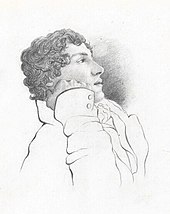
Aristotle's work was influential throughout the Middle East during the Islamic Golden Age,[27] as well as in Europe during the Renaissance.[28] Later poets and aestheticians often distinguished poetry from, and defined it in opposition to prose, which they generally understood as writing with a proclivity to logical explication and a linear narrative structure.[29]
This does not imply that poetry is illogical or lacks narration, but rather that poetry is an attempt to render the beautiful or sublime without the burden of engaging the logical or narrative thought-process. English Romantic poet John Keats termed this escape from logic "negative capability".[30] This "romantic" approach views form as a key element of successful poetry because form is abstract and distinct from the underlying notional logic. This approach remained influential into the 20th century.[31]
During the 18th and 19th centuries, there was also substantially more interaction among the various poetic traditions, in part due to the spread of European colonialism and the attendant rise in global trade.[32] In addition to a boom in translation, during the Romantic period numerous ancient works were rediscovered.[33]
20th-century and 21st-century disputes

Some 20th-century literary theorists rely less on the ostensible opposition of prose and poetry, instead focusing on the poet as simply one who creates using language, and poetry as what the poet creates.[34] The underlying concept of the poet as creator is not uncommon, and some modernist poets essentially do not distinguish between the creation of a poem with words, and creative acts in other media. Other modernists challenge the very attempt to define poetry as misguided.[35]
The rejection of traditional forms and structures for poetry that began in the first half of the 20th century coincided with a questioning of the purpose and meaning of traditional definitions of poetry and of distinctions between poetry and prose, particularly given examples of poetic prose and prosaic poetry. Numerous modernist poets have written in non-traditional forms or in what traditionally would have been considered prose, although their writing was generally infused with poetic diction and often with rhythm and tone established by non-metrical means. While there was a substantial formalist reaction within the modernist schools to the breakdown of structure, this reaction focused as much on the development of new formal structures and syntheses as on the revival of older forms and structures.[36]
Postmodernism goes beyond modernism's emphasis on the creative role of the poet, to emphasize the role of the reader of a text (hermeneutics), and to highlight the complex cultural web within which a poem is read.[37] Today, throughout the world, poetry often incorporates poetic form and diction from other cultures and from the past, further confounding attempts at definition and classification that once made sense within a tradition such as the Western canon.[38]
The early 21st-century poetic tradition appears to continue to strongly orient itself to earlier precursor poetic traditions such as those initiated by Whitman, Emerson, and Wordsworth. The literary critic Geoffrey Hartman (1929–2016) used the phrase "the anxiety of demand" to describe the contemporary response to older poetic traditions as "being fearful that the fact no longer has a form",[39] building on a trope introduced by Emerson. Emerson had maintained that in the debate concerning poetic structure where either "form" or "fact" could predominate, that one need simply "Ask the fact for the form." This has been challenged at various levels by other literary scholars such as Harold Bloom (1930–2019), who has stated: "The generation of poets who stand together now, mature and ready to write the major American verse of the twenty-first century, may yet be seen as what Stevens called 'a great shadow's last embellishment,' the shadow being Emerson's."[40]
Elements
Prosody
Prosody is the study of the meter, rhythm, and intonation of a poem. Rhythm and meter are different, although closely related.[41] Meter is the definitive pattern established for a verse (such as iambic pentameter), while rhythm is the actual sound that results from a line of poetry. Prosody also may be used more specifically to refer to the scanning of poetic lines to show meter.[42]
Rhythm

The methods for creating poetic rhythm vary across languages and between poetic traditions. Languages are often described as having timing set primarily by accents, syllables, or moras, depending on how rhythm is established, although a language can be influenced by multiple approaches. Japanese is a mora-timed language. Latin, Catalan, French, Leonese, Galician and Spanish are called syllable-timed languages. Stress-timed languages include English, Russian and, generally, German.[43] Varying intonation also affects how rhythm is perceived. Languages can rely on either pitch or tone. Some languages with a pitch accent are Vedic Sanskrit or Ancient Greek. Tonal languages include Chinese, Vietnamese and most Subsaharan languages.[44]
Metrical rhythm generally involves precise arrangements of stresses or syllables into repeated patterns called feet within a line. In Modern English verse the pattern of stresses primarily differentiate feet, so rhythm based on meter in Modern English is most often founded on the pattern of stressed and unstressed syllables (alone or elided).[45] In the classical languages, on the other hand, while the metrical units are similar, vowel length rather than stresses define the meter.[46] Old English poetry used a metrical pattern involving varied numbers of syllables but a fixed number of strong stresses in each line.[47]
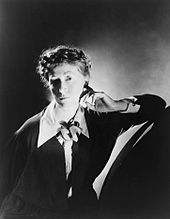
The chief device of ancient Hebrew Biblical poetry, including many of the psalms, was parallelism, a rhetorical structure in which successive lines reflected each other in grammatical structure, sound structure, notional content, or all three. Parallelism lent itself to antiphonal or call-and-response performance, which could also be reinforced by intonation. Thus, Biblical poetry relies much less on metrical feet to create rhythm, but instead creates rhythm based on much larger sound units of lines, phrases and sentences.[48] Some classical poetry forms, such as Venpa of the Tamil language, had rigid grammars (to the point that they could be expressed as a context-free grammar) which ensured a rhythm.[49]
Classical Chinese poetics, based on the tone system of Middle Chinese, recognized two kinds of tones: the level (平 píng) tone and the oblique (仄 zè) tones, a category consisting of the rising (上 sháng) tone, the departing (去 qù) tone and the entering (入 rù) tone. Certain forms of poetry placed constraints on which syllables were required to be level and which oblique.
The formal patterns of meter used in Modern English verse to create rhythm no longer dominate contemporary English poetry. In the case of free verse, rhythm is often organized based on looser units of cadence rather than a regular meter. Robinson Jeffers, Marianne Moore, and William Carlos Williams are three notable poets who reject the idea that regular accentual meter is critical to English poetry.[50] Jeffers experimented with sprung rhythm as an alternative to accentual rhythm.[51]
Meter
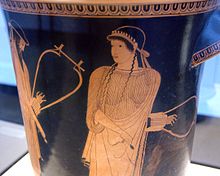
In the Western poetic tradition, meters are customarily grouped according to a characteristic metrical foot and the number of feet per line.[53] The number of metrical feet in a line are described using Greek terminology: tetrameter for four feet and hexameter for six feet, for example.[54] Thus, "iambic pentameter" is a meter comprising five feet per line, in which the predominant kind of foot is the "iamb". This metric system originated in ancient Greek poetry, and was used by poets such as Pindar and Sappho, and by the great tragedians of Athens. Similarly, "dactylic hexameter", comprises six feet per line, of which the dominant kind of foot is the "dactyl". Dactylic hexameter was the traditional meter of Greek epic poetry, the earliest extant examples of which are the works of Homer and Hesiod.[55] Iambic pentameter and dactylic hexameter were later used by a number of poets, including William Shakespeare and Henry Wadsworth Longfellow, respectively.[56] The most common metrical feet in English are:[57]

- iamb – one unstressed syllable followed by a stressed syllable (e.g. des-cribe, in-clude, re-tract)
- trochee—one stressed syllable followed by an unstressed syllable (e.g. pic-ture, flow-er)
- dactyl – one stressed syllable followed by two unstressed syllables (e.g. an-no-tate, sim-i-lar)
- anapaest—two unstressed syllables followed by one stressed syllable (e.g. com-pre-hend)
- spondee—two stressed syllables together (e.g. heart-beat, four-teen)
- pyrrhic—two unstressed syllables together (rare, usually used to end dactylic hexameter)
There are a wide range of names for other types of feet, right up to a choriamb, a four syllable metric foot with a stressed syllable followed by two unstressed syllables and closing with a stressed syllable. The choriamb is derived from some ancient Greek and Latin poetry.[55] Languages which use vowel length or intonation rather than or in addition to syllabic accents in determining meter, such as Ottoman Turkish or Vedic, often have concepts similar to the iamb and dactyl to describe common combinations of long and short sounds.[59]
Each of these types of feet has a certain "feel," whether alone or in combination with other feet. The iamb, for example, is the most natural form of rhythm in the English language, and generally produces a subtle but stable verse.[60] Scanning meter can often show the basic or fundamental pattern underlying a verse, but does not show the varying degrees of stress, as well as the differing pitches and lengths of syllables.[61]
There is debate over how useful a multiplicity of different "feet" is in describing meter. For example, Robert Pinsky has argued that while dactyls are important in classical verse, English dactylic verse uses dactyls very irregularly and can be better described based on patterns of iambs and anapests, feet which he considers natural to the language.[62] Actual rhythm is significantly more complex than the basic scanned meter described above, and many scholars have sought to develop systems that would scan such complexity. Vladimir Nabokov noted that overlaid on top of the regular pattern of stressed and unstressed syllables in a line of verse was a separate pattern of accents resulting from the natural pitch of the spoken words, and suggested that the term "scud" be used to distinguish an unaccented stress from an accented stress.[63]
Metrical patterns

Different traditions and genres of poetry tend to use different meters, ranging from the Shakespearean iambic pentameter and the Homeric dactylic hexameter to the anapestic tetrameter used in many nursery rhymes. However, a number of variations to the established meter are common, both to provide emphasis or attention to a given foot or line and to avoid boring repetition. For example, the stress in a foot may be inverted, a caesura (or pause) may be added (sometimes in place of a foot or stress), or the final foot in a line may be given a feminine ending to soften it or be replaced by a spondee to emphasize it and create a hard stop. Some patterns (such as iambic pentameter) tend to be fairly regular, while other patterns, such as dactylic hexameter, tend to be highly irregular.[64] Regularity can vary between language. In addition, different patterns often develop distinctively in different languages, so that, for example, iambic tetrameter in Russian will generally reflect a regularity in the use of accents to reinforce the meter, which does not occur, or occurs to a much lesser extent, in English.[65]

Some common metrical patterns, with notable examples of poets and poems who use them, include:
- Iambic pentameter (John Milton, Paradise Lost; William Shakespeare, Sonnets)[66]
- Dactylic hexameter (Homer, Iliad; Virgil, Aeneid)[67]
- Iambic tetrameter (Andrew Marvell, "To His Coy Mistress"; Alexander Pushkin, Eugene Onegin; Robert Frost, Stopping by Woods on a Snowy Evening)[68]
- Trochaic octameter (Edgar Allan Poe, "The Raven")[69]
- Trochaic tetrameter (Henry Wadsworth Longfellow, The Song of Hiawatha; the Finnish national epic, The Kalevala, is also in trochaic tetrameter, the natural rhythm of Finnish and Estonian)
- Alexandrin (Jean Racine, Phèdre)[70]
Rhyme, alliteration, assonance

Rhyme, alliteration, assonance and consonance are ways of creating repetitive patterns of sound. They may be used as an independent structural element in a poem, to reinforce rhythmic patterns, or as an ornamental element.[71] They can also carry a meaning separate from the repetitive sound patterns created. For example, Chaucer used heavy alliteration to mock Old English verse and to paint a character as archaic.[72]
Rhyme consists of identical ("hard-rhyme") or similar ("soft-rhyme") sounds placed at the ends of lines or at locations within lines ("internal rhyme"). Languages vary in the richness of their rhyming structures; Italian, for example, has a rich rhyming structure permitting maintenance of a limited set of rhymes throughout a lengthy poem. The richness results from word endings that follow regular forms. English, with its irregular word endings adopted from other languages, is less rich in rhyme.[73] The degree of richness of a language's rhyming structures plays a substantial role in determining what poetic forms are commonly used in that language.[74]
Alliteration is the repetition of letters or letter-sounds at the beginning of two or more words immediately succeeding each other, or at short intervals; or the recurrence of the same letter in accented parts of words. Alliteration and assonance played a key role in structuring early Germanic, Norse and Old English forms of poetry. The alliterative patterns of early Germanic poetry interweave meter and alliteration as a key part of their structure, so that the metrical pattern determines when the listener expects instances of alliteration to occur. This can be compared to an ornamental use of alliteration in most Modern European poetry, where alliterative patterns are not formal or carried through full stanzas. Alliteration is particularly useful in languages with less rich rhyming structures.
Assonance, where the use of similar vowel sounds within a word rather than similar sounds at the beginning or end of a word, was widely used in skaldic poetry but goes back to the Homeric epic.[75] Because verbs carry much of the pitch in the English language, assonance can loosely evoke the tonal elements of Chinese poetry and so is useful in translating Chinese poetry.[76] Consonance occurs where a consonant sound is repeated throughout a sentence without putting the sound only at the front of a word. Consonance provokes a more subtle effect than alliteration and so is less useful as a structural element.[74]
Rhyming schemes

In many languages, including Arabic and modern European languages, poets use rhyme in set patterns as a structural element for specific poetic forms, such as ballads, sonnets and rhyming couplets. However, the use of structural rhyme is not universal even within the European tradition. Much modern poetry avoids traditional rhyme schemes. Classical Greek and Latin poetry did not use rhyme.[77] Rhyme entered European poetry in the High Middle Ages, due to the influence of the Arabic language in Al Andalus.[78] Arabic language poets used rhyme extensively not only with the development of literary Arabic in the sixth century, but also with the much older oral poetry, as in their long, rhyming qasidas.[79] Some rhyming schemes have become associated with a specific language, culture or period, while other rhyming schemes have achieved use across languages, cultures or time periods. Some forms of poetry carry a consistent and well-defined rhyming scheme, such as the chant royal or the rubaiyat, while other poetic forms have variable rhyme schemes.[80]
Most rhyme schemes are described using letters that correspond to sets of rhymes, so if the first, second and fourth lines of a quatrain rhyme with each other and the third line do not rhyme, the quatrain is said to have an AA BA rhyme scheme. This rhyme scheme is the one used, for example, in the rubaiyat form.[81] Similarly, an A BB A quatrain (what is known as "enclosed rhyme") is used in such forms as the Petrarchan sonnet.[82] Some types of more complicated rhyming schemes have developed names of their own, separate from the "a-bc" convention, such as the ottava rima and terza rima.[83] The types and use of differing rhyming schemes are discussed further in the main article.
Form in poetry
Poetic form is more flexible in modernist and post-modernist poetry and continues to be less structured than in previous literary eras. Many modern poets eschew recognizable structures or forms and write in free verse. Free verse is, however, not "formless" but composed of a series of more subtle, more flexible prosodic elements.[84] Thus poetry remains, in all its styles, distinguished from prose by form;[85] some regard for basic formal structures of poetry will be found in all varieties of free verse, however much such structures may appear to have been ignored.[86] Similarly, in the best poetry written in classic styles there will be departures from strict form for emphasis or effect.[87]
Zdroj:https://en.wikipedia.org?pojem=Poetic
Text je dostupný za podmienok Creative Commons Attribution/Share-Alike License 3.0 Unported; prípadne za ďalších podmienok. Podrobnejšie informácie nájdete na stránke Podmienky použitia.
Antropológia
Aplikované vedy
Bibliometria
Dejiny vedy
Encyklopédie
Filozofia vedy
Forenzné vedy
Humanitné vedy
Knižničná veda
Kryogenika
Kryptológia
Kulturológia
Literárna veda
Medzidisciplinárne oblasti
Metódy kvantitatívnej analýzy
Metavedy
Metodika
Text je dostupný za podmienok Creative
Commons Attribution/Share-Alike License 3.0 Unported; prípadne za ďalších
podmienok.
Podrobnejšie informácie nájdete na stránke Podmienky
použitia.
www.astronomia.sk | www.biologia.sk | www.botanika.sk | www.dejiny.sk | www.economy.sk | www.elektrotechnika.sk | www.estetika.sk | www.farmakologia.sk | www.filozofia.sk | Fyzika | www.futurologia.sk | www.genetika.sk | www.chemia.sk | www.lingvistika.sk | www.politologia.sk | www.psychologia.sk | www.sexuologia.sk | www.sociologia.sk | www.veda.sk I www.zoologia.sk

